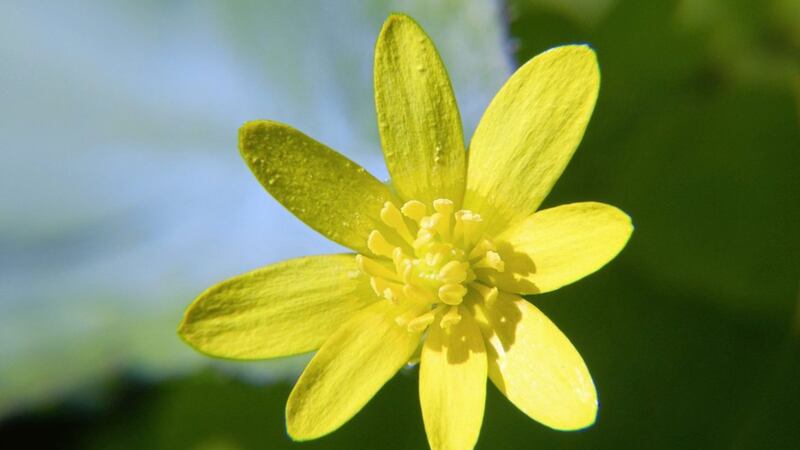HEARING the song of the chiffchaff, is for me, the definitive sign spring has arrived, the bird’s presence evidence of a journey successfully completed from its winter home in the Mediterranean basin to the insect rich skies of Ireland.
Although it will be another few weeks before I hear its simple ‘chiff-chaff’ call, there were some other signs recently that spring is about to unfurl its full complement of renewal, colour, growth and birdsong.
During the sun-filled days of late February, bird music filled the air morning and evening, while in between, queen bumblebees, awakened from their winter slumbers underground, searched busily for nectar from any available flowers. Perfectly timed, the golden yellow star-like flowers and green heart-shaped leaves of lesser celandine were bursting forth from local verges and under hedges to oblige.
The Celtic name for the plant, grian, the sun, refers to its habit of greeting the sun at dawn like a true sun-worshipper and of closing its petals at the first sign of rain beginning to fall.
Ficaria verna, a member of the buttercup family, has a long history as a wild edible plant with its fleshy roots and tubers thought to have been eaten by our earliest ancestors. Milliken and Bridgewater in Flora Celtica (2004) speculated that in Scotland lesser celandine may have been used for food, as charred remains of its tubers have been found in deposits in Oronsay, a small island in the Inner Hebrides, dating back to the Mesolithic period.
More recent research from Klooss, S, et al, Quaternary International (2015) also found that similar charred root tubers from the plant were found in "Neolithic sites in Northern Germany and Denmark", suggesting that ‘’tubers in domestic contexts can widely be interpreted as wild food’’.
Lesser celandine also had medicinal uses through the centuries and has historically been used to treat ulcers, warts and especially piles, leading to one of its other common names, pilewort, included as a translation for the plant in Dineen’s Irish-English dictionary of 1927.
The ancient Doctrine of Signatures, an important aspect of folk medicine from the Middle Ages, believed the plant’s tubers resembled haemorrhoids and thus could be used to treat the condition. This belief suggested that a plant resembles the condition or part of the body that it can heal.
Folk healers in Christian countries claimed that God deliberately made plants resemble the parts of the body they could cure. For example, Eyebright, a plant whose flower looks strikingly like human eyes, was used to treat eye ailments, like conjunctivitis. A 16th century Swiss physician, Paracelsus, is sometimes credited with the creation of the 'doctrine of signatures', which states that herbs resembling particular parts of the body can be used to treat ailments of those body parts.
If not the creator, he was certainly a proponent of the doctrine, writing, “Nature marks each growth… according to its curative benefit”.
In the Western Isles of Scotland, the tubers were also believed to resemble a cow’s udder and so bunches were hung in cow byres to ensure high milk yields. The pointed rays of this early spring flower were so special to the poet Wordsworth that he penned three poems in the plant’s honour, writing of its "glittering countenance" and how its presence spreads the "News of winter’s vanishing’".
In To The Small Celandine, he wrote that although many flowers, like daises, pansies and primroses, "will have their glory… There’s a flower that shall be mine/ ’Tis the little Celandine".
Upon his death it was proposed that, because of his fondness for the flower, a lesser celandine be carved on his memorial plaque inside St Oswald's Church, Grasmere,in the Lake District, but unfortunately greater celandine was mistakenly used instead.








